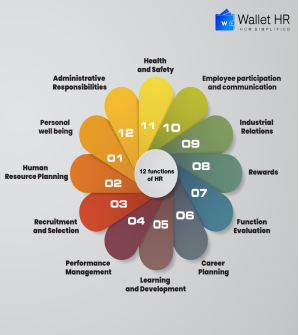Incorporate these HR practices to achieve your company's goals
Jun 08, 2022

Mercer's 2022 Global Talent Trends study highlights that difficulty in hiring the right talent, at the right price, and in time remains a top concern in 2022.
As companies continue to evolve, so do HR practices. Is your company also evolving to use HR practices? This blog introduces you to the 12 essential and trending practices of HR which will help improve your employee management, behavioral competency, employee retention, and succession planning.
In general, we think employee recruitment is just one of the many responsibilities of the Human Resources department when we discuss HR practices. It also encompasses performance management, learning and development, promotion, employee communication, rewards, and many other activities.
Organizations with highly aligned cultures, together with highly aligned innovation strategies, see 30% higher enterprise value growth and 17% higher profit growth. Not only that, compelling values attract better candidates. Over 75% of employees consider it very important to work for a company with defined core values.
This article will focus on the best practices an HR professional would follow, regardless of the company's size. But first let’s take a look at the topmost top most HR functions and how they align with the best practices

- Human Resource Planning
- Recruitment and selection
- Performance management
- Learning and Development
- Career Planning
- Function Evaluation
- Rewards
- Industrial Relations
- Employee participation and communication
- Health and Safety
- Personal well being
- Administrative Responsibilities
Now that you’ve taken a look at the functions of an HR department, let's take a closer look at how the HR personnel implement the best-known practices under these functions.
Job Security and HRP
The very first important practice that HR follows is to provide security to their employees to reduce the new employee turnover and retain their trained employees. Employee Retention is very important since the company invests its time and money in recruiting, selection, training, and development. Without retention, employees are more likely to leave and work for their competitors.
Acquiring the right talent
To bring in skilled employees, selective hiring is the next step. It is crucial to prioritize the hiring process to be fair to each one of the candidates. It is imperative to verify their ability to perform the job, the scope of their training, and their commitment to doing the job. There are many digital tools for the recruitment process in today's digital world since it is a crucial step for any organization. Wallet HR provides recruiters with a recruitment management module that allows them to efficiently parse resumes, thus saving them a great deal of time.
Developing the existing skills
Once the candidate joins the company, skill development is a critical part of any business model now since markets, strategies, and even dynamic business environments have been rapidly evolving. This worldwide pandemic has compelled companies to emphasize skill development and the capability to go digital is crucial.
Employee compensation
Many candidates take on jobs without being able to determine how they will be compensated for their contributions. The HR department plays a crucial role here in ensuring that each employee receives a fair salary based on their contributions to the company's objectives. The payroll function comes in handy in this step.
Training the employees
An important practice that every HR department should follow is investing in the training of employees. It helps them to identify the skills of their employees, which will help them to retain employees, improve employee skills, and make them more competitive by increasing their productivity.
Transparency and Employee Benefits
The next important practices to look into are transparency, employee benefits, and employee feedback, which are an important part of any organization to deal with absences, resolve conflicts and promote employees. Recognizing the employees efforts gives them a chance to perform well and will allow them to develop which requires the HR team to find ways to keep their employees engaged.
Best practices to implement
- Through Human Resource Planning one needs to hire skilled employees and provide them security.
- Providing Training and Development to ensure that they grow over the period of time and achieve the organizational goals.
- Need to monitor the employee performance, provide them the necessary feedback to improve and reward them to keep them motivated.
- Offer great employee benefits, transparency, and open communication channels.
CONCLUSION
In order to have effective Human Resource Management, a company must follow these best practices in terms of human resource planning, behavioral competency, employee retention, etc. In order to hire quality employees, organizations make use of human resource planning.
By fostering a positive work environment, organizations can retain talented employees and reduce employee turnover. Investing in training existing employees increases employee engagement because the employees are appreciated for their hard work.
Through compensation, benefits, and transparency, employees are motivated to work hard and achieve company goals. These practices align the employees with the company goals and objectives.